#ST segment
Explore tagged Tumblr posts
Text
Monitor Like a Pro: Continuous ST segment monitoring
Monitor Like a Pro: Continuous ST segment monitoring #FOANed #ICU #criticalcare #nurseeducator #STEMI
Time is Muscle Delivering continuous ST-segment monitoring for those at risk of myocardial infarction can provide a dynamic approach to cardiac monitoring, picking up changes in the ST-segment. This can supplement the continuous bedside ecg monitoring, static 12 lead ecg and monitoring the trend of cardiac enzymes such as Troponin’s, CK, CK-MB. This is not new technology, its been around since…

View On WordPress
0 notes
Text
not to be whiny or anything but just thinking about the way my art always flops on every platform without fail, especially compared to other low effort stuff usually, and it’s gone from ‘that’s just how it be algorithms suck’ to ‘maybe I just suck at art and am deluding myself’ which isn’t fun
anyway here’s a hearth doodle I like bcs I’m trying to not fall into that mindset even if it means clawing my way out w my bare hands

#it’s like this: I know numbers aren’t a measure of talent#but it’s hard to ignore them sometimes#and it’s tiring and disheartening or whatever#and sucky but ehhhh it’s also a dumb mindset#got two wolves in me#one is telling me I suck st drawing and the other is beating that wolf up#idk who’s winning yet#anyways new segment unlocked:#tanner rants#tanner draws#hearthstone alderman#magnus chase
77 notes
·
View notes
Text
Good morning!
I know it's been a long time since I've posted (I've finally settled in to my new home with my boyfriend Jeff), but I had to write about my new favorite comedy thing right now:
EVERYBODY'S IN L.A.!
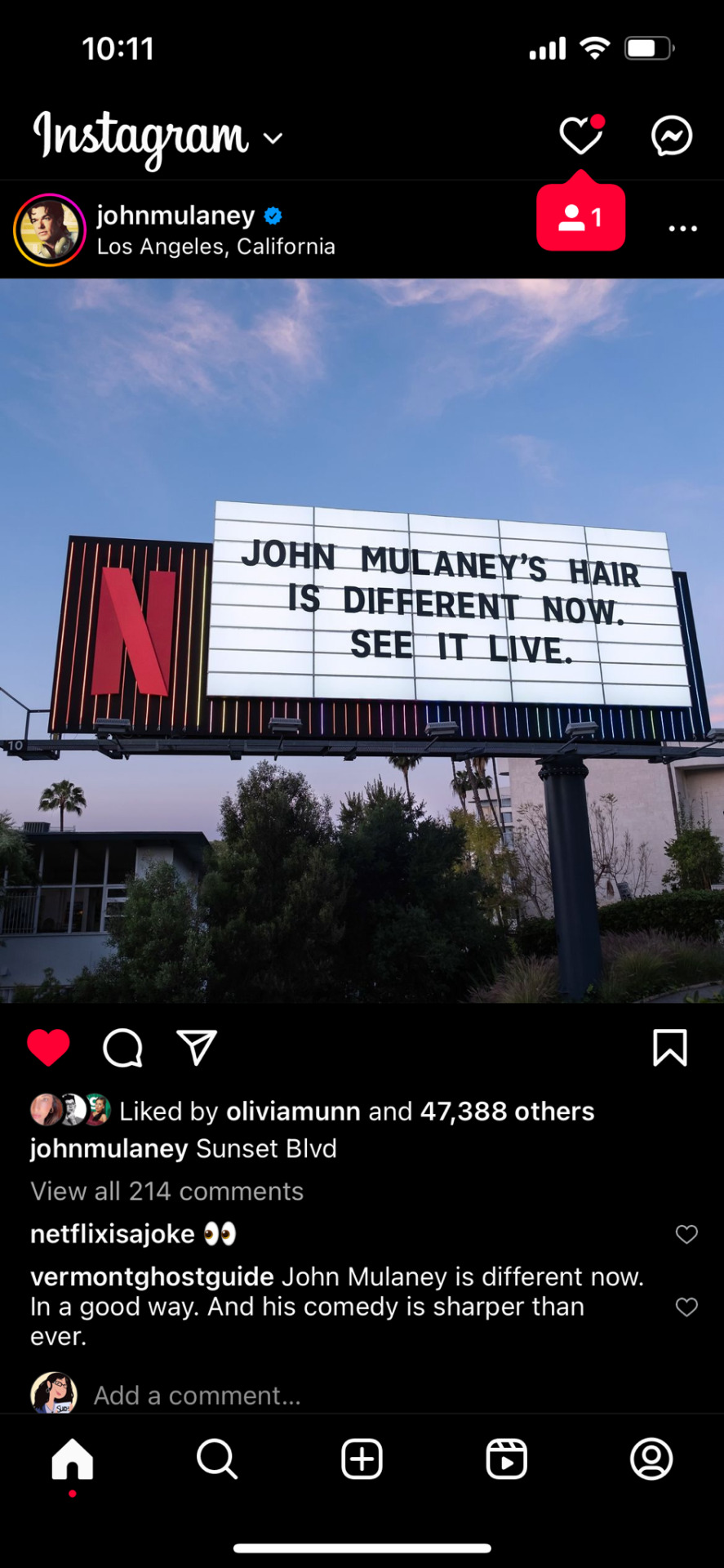
There have been two live episodes so far (Coyotes and Palm Trees), but the chaotic and absurd nature of the program has been an absolute BLAST to watch, and I am totally digging John Mulaney's new look lol.
If you're a fan of improv comedy or just want to see some of your favorite comics sitting in a 1970s living room set getting snacks from a roving robot (Saymo scared the SHIT out of Jon Stewart last night on multiple occasions lol), then I urge you to watch.
The episodes are live at 10pm ET, and there are four topics left:
Helicopters
Ghosts
Earthquakes
LA
And so many fun guest stars will be showing up, including my boys Gil and George! (Oh...HELLO)

Have you been watching? What do you think of John's talk show format? Doesn't it sound similar to what he proposed about interviewing experts in that ill-fated 2020 GQ article?
But I always wanted to do a talk show where the guest is always someone from a job that I don't understand. I'd love to interview a dog catcher and be like, "What is that like? How do you feel about yourself? I'm not judging, but I am a little. How do you feel rounding up dogs and taking them to the pound?" I had two ideas for a talk show once. And by ideas, I mean I thought about them in the privacy of my own room. One would be just interviewing people who do anything that interests me. And I don't mean like on the ground and I'm watching them do their job. It would be like a talk show set and they'd come out and there'd be a band and so forth.
Anyway, I hope you all enjoy the rest of the episodes, and keep it here for more comedy fun! ✌🏼🐔

#john mulaney#everybody's in la#los angeles#gil faizon#george st. geegland#oh hello#will there be too much tuna?#i had to explain George and Gil to my boyfriend#he's now well-versed in WOLO and Steely Dan lol#bill hader is coming up as well as patton oswalt#super psyched#and I'm loving the taped segments even if others are not#sooo many comedians! yay#netflix is a joke
26 notes
·
View notes
Text
I need to book my ticket
#caribbean#caribbean culture#caribbean women#caribbean men#black#beautiful#black women#black men#wine#dance#carnival#mas#masqueraders#west indian#west indies#melanin#soca#dennery segment#st. lucia
100 notes
·
View notes
Text
I'll try to draw other stuff in between but i wanna do one of those "are we soulmates in every universe" videos with some of the ships i like
#like ive already done a jancy segment bc ofc i have#partially got a marichat bit done as well#i want to at least do lumax too and maybe a byler one but i don't want it to just be st ships yk#days of not being able to draw has given me loads of ideas lmao
4 notes
·
View notes
Note
Happy STS!
Your characters and story but it's the middle ages. What roles do they have in the society? Are they royalty or something else? How does your story change?
(Also unrelated but I was curious does the place that Claire comes from have a name? I read until page 22 of the webcomic and I want spoilers because I am horrible at handling suspense)
Ahh, hm. About 90% of my stories are in some kind of medieval-fantasy setting, besides Break of Dawn. There is, also, a medieval fantasy past to that story - you can find that in the tag "before dawn : the age of the gods", that is mostly full of random thoughts and snippets. I have a lot of thoughts about pre-Dawn things because I am completely unable to do anything modern for more than half a second before turning to medieval fantasy again.
If we're just teleporting everyone to the normal middle ages, Claire doesn't get powers and her family doesn't die HAHA (<- so so evil.); the whole story cannot happen because its inciting incident is... genuinely, a half god from space arriving and going "I don't like how things are around here. Let's destroy everything that makes this place special, and turn it into what I think it should be !".
We could have a completely different story, turning Dawn into some queen that has invaded the country and having a ruthless rule, and killing Claire's family off for whatever reason to jumpstart the moment where we start following characters, but that's not really something I'd want to explore. The point of Break of Dawn is that it used to be medieval fantasy, but no one remembers, and magic is actively erased, history rewritten, people killed to hide it.
I'm having trouble just imagining Break of Dawn in the middle ages because it... really is not made for it to work there at all, haha. It would be an entirely different thing, I'd probably cut down the number of characters, as we wouldn't need the overpowered 3 of the Undercity; Dawn could just be assassinated. Etc, etc. Vincent would be interesting as an evil advisor, though... Claire would likely start out as the child of farmers, and if I'd figured out a way to murder her family, she'd become a traveler/adventurer with her Brand New Dads, I guess.
The problem here is really that it's not meant to work there at all, and that everything else I write is already medieval-flavored, haha.
Here's what we could do, i guess :
Claire's family gets murdered for ??? reasons. She gets picked up by two errant adventurers. (knights, maybe ?)
She meets Vincent, who's like 2 years older than she is, because he's the son of her new dads' friends.
After some growing up, Claire and her dads live with other people in the capital city of the country, she gets a baby brother.
They eventually have to rescue Vincent and his new baby sibling, while Vincent's parents get killed, because they were doing shady shit.
This whole time the adventurer dads are doing shady shit, but they aren't explaining to their daughter that they're straight up trying to murder the queen.
??? Vincents gets abducted by his uncle, becomes nobility and the queen's evil advisor.
The dads die.
Claire becomes an adult, raises her two little brothers Sacha & Kyle, falls in love, blah blah.
When her brothers are teenagers, Sacha gets abducted, Vincent is the one to save him and get him back to her.
Meanwhile a stray seer (at least that's what that 16 year old claims to be) is picked up by Kyle
Claire and her family go avenge the Witchmann dads and murder the queen. I don't know what happens to Vincent.
That's it. I'd just straight up get rid of the Sky City and everyone in it. Sorry Elysia, Val, Mark, Melyane, and Ava. They wouldn't work in a pure medieval setting, the core of their existence is because of magic. Val, Mark and Ava especially are reminders of the past before Dawn.
(Also : while the little town she grew up in doesn't have a name, mainly because we're never going back there in the story, i can tell you the story currently takes place in the region of Lonna. I don't have a finite map as of right now, so I can't like. point and go "this is Lonna". The capital of Lonna is called Kello, and it's a place that will eventually appear. Currently, Claire and the Witchmanns are quite far up north of Lonna, I think ? I'm not 100% sure; geography in Break of Dawn isn't really something I've thought about. Also, Hoo Boy :) while I wouldn't consider the name of the region to be a big spoiler, there's a couple of places that could technically be considered spoilers if you want them : the Sky City, the Academy, the Undercity, the labs. >:) we'll be exploring them eventually ! Though, thankfully, Claire won't be the one getting put through these things for once.)
(I also, like, don't even tag break of dawn spoilers as spoilers most of the time when i'm talking about characters or events that won't appear for a while, so if you ever see mention of... literally any character that isn't Claire, Sandy or Percy in a post of mine tagged Break of Dawn, it's currently technically spoilers. OR it's before Dawn. One or the other. Sometimes both if it's about the Emperor ! So if you want to learn more about anything, don't hesitate ! i love rambling, lol)
#sts#i hope this isn't like a weird/bummer answer or something#it just would be. hm. a whole other thing. LOL#break of dawn#there's SO many people in break of dawn...............#ALSO i'm glad you're enjoying the webcomic !!!!#i have no idea what i'm doing !!! i hope to finally wrap up this segment because it was supposed to be over several months ago LOL#klgjhlsdk.#yeah uh anyway im incapable of not writing high fantasy.
4 notes
·
View notes
Text
Aww Bailey's sick :(((( footy is cancelled this week, I'm so sorry
#aflm#between this and finding out that the tribunal won't accept maxi's statement that serong is so right then what's the point#that would definitely be Maxi's statement though#if he made one#maxi is too busy buying st kilda bibs and filling his garage with boxes of baby formula#maxi is a chinese government's nightmare#i can't even remember the baby formula debacle but Charlie Pickering had the funniest segment about it on the weekly#and i can never find it on YouTube#and i can't remember what season/episode
1 note
·
View note
Text
Fortune ✨ has nothing to do with Us


“He’s called for you again,” the seamstress says as she puts the finishing touches on my dress. “Twice.”
“I can’t imagine why.” I told a bold faced lie. I know exactly why one of the strongest Gatekeepers in this realm, wanted an audience with me.
“Well?” She picks away at her needle, “You gonna respond or not?”
My head shook, changing the subject. “How much longer? I have to be in the throne room in an hour.”
“Oh, stop your fussing.” She waves her head. “No meeting about the fates of this land, will start without you. You’re a legend after all, Miss Valerikye.”
“I appreciate your candor. But there’s simply no need.”
With some fabric and a magical hand later, she spins me around toward the mirror. “You know, if I’m not too forward Miss. I hear he’s a hell of hunter. Took down a whole fleet of hollows just before your arrival.”
“Amusing.” I say, holding an eye roll. “But I’m afraid—strength alone—can’t wins one’s heart.”
“Say…….would an audience do the trick?”
“What are you—?”
“He’s just outside, Miss.”
There’s really no avoiding him, is there? I huffed and quickly changed back into my shiny armor.
“Send a bird when it’s finished.”
She bowed, taking the gown away. “As you wish, Miss.” I had to ignore her small giggling as I made it out the door.
“Gatekeeper of the Golden Bloom.” I addressed him. He was leaning against a cherry tree, a stem hanging out of his mouth. When he saw my shadow, he slowly lifted his face and showed me all his glistening teeth. “Why are you trailing me?”
He flicked the cherry bit and rose up to greet me.“Is it customary to get to know my future wife?”
“That’s a bold exuberance.” I said. “I don’t recall ever agreeing.”
“But you heard the Gods,” he replied. “This was never something you could hide from. It’s an inevitable destiny for us to be reunited.” My hand closed his mouth swiftly.
“I suggest you watch your tongue.” I warned him. “Such vile won’t be tolerated.”
He swiftly disintegrated my knife when he removes it from my hand. He pulls my arm towards the ground to knock me down, and I swiftly slid across, catching him off guard. I wiggle free from his grasp and grab his foot, causing him to lose his balance. I shift my weight onto him and aim next choice of weapon—my bow. He raises his hands in a smile.
“You won’t agree with me,” he whispered, “But we are destined to bring this about.”
I let out a sigh, lowering my bow and causing it to disappear from my grasp. I swiftly rose to my feet, lifting him up as well. “And they say I’m losing my mind.”
He pulls me back to his chest, dusting off my armor. “Can you at least believe my eyes? They won’t lie. I think… I’ve loved you for lifetimes.”
I got out his grasp, trying to take the first step to the castle. “I have a job to do.”
“So do I.” He trailed me yet again.
“You—might be a vexing disappointment.”
“I know, you don’t feel that to be true.” He says, before blocking my route completely. “Your eyes, too, can’t deceive me.”
I wanted to murder him. But it wouldn’t be wise to kill the only gatekeeper who is capable of controlling the northern fleet of hollows. I sniffed and continued walk more forcefully, not breaking any more stride. “Alright, Keeper. How do I get rid of you?”
He materializes before me, harnessing a faint trace of our sun’s energy to enhance his physical form. A smile graces his lips. “I propose a single date at Celestial Tavern. Ensure that you have a delightful time. Do that. And I’ll guarantee that you won’t fall for me.”
“You have an accord for now.” I let the wind pull me away from him. He looked up towards the sky as I ascended. “You have until twilight tomorrow. Don’t waste my time.” I try to suppress the memory of his smug smile as I approached the castle throne room.
“Ah Miss Valerikye.” The guard greets me first with a secret pledge, kneeling. “You must be tired after an earnest journey.”
“No need for that.” I gestured him to stop bowing. “Where’s the King?”
“Your brother remains perpetually in the dark when it’s about sunrise.” The Queen entered the room, and I bowed, lowering my head. She lifted my head before greeting me with the most radiant smile. “Raise your head, Kiy. Even in marriage, you are more than just a sister-in-law to me. And as the townspeople tend to gossip, I have heard that you are not far behind in that regard either.”
I intend to punish that seamstress. That dress must be held up to perfection, like a diamond glass. “Your Majesty, forgive me. But I believe that townspeople know nothing more than an ant with no farm.”
The Queen laughed humorously when she patted my shoulder. “Yes, you are indeed Ralphion’s blood.”
“Which brings me back to inquire his whereabouts.”
“He’s with the round table. The Zestrians are making quite the uproar at the Seven Gates.”
“Should I call my captain?” I suggested. “If there’s war on the brink—“
“You must not hasten, Kiy.” The Queen walked over to the monumental statues of the royal family. She was a proud Zestrian herself until she fell in love with my brother. The Queen sighed, “I only want you as a guest, tonight.”
“But—“
“Are you to disappoint your Queen? Your only sister-in-law?”
“No, your Majesty.” My head bowed in solidarity.
Her smile grew more intense than ever before. “Very well. Please allow Hellga to get you settled. Someone should be responsible for running your bath-water soon.”
I bowed in my departure and exited the throne room. I hated being sidelined. And that’s exactly what happening. I needed to get in touch with Gabriel. King or not—he relies upon my strength to make sure our realms don’t plummet on his behalf.
But all that for now need not matter. Tiredness from the journey started to capture my entire being. I wanted nothing to do but soak in the hottest whirlpool and clear my head from any other sweat—
Val?
I ignored the rumbling, husky voice that pulled the strains of my subconsciously cold mind.
Val, you can’t simply ignore me like this. I need to know you’re okay. There have been reports of—
I remove my armor and peer down my eyes into the darkness of the night. Though, I’m pretty certain it was daylight while I arrived. This realm is frictionless by time. It never has been something I got use to.
What is it, Gatekeeper?
Thank for the fucking stars. Don’t move. I’m coming to see you.
You will do no such thing. You need not worry. The castle is heavily guarded.
Val, the guards are no where to be found. I think this is a coo. Where’s your brother?
The Queen-
I ceased my telepathy. Because I felt like an utter fool. I’ve should have trusted my gut to see the King myself. I quickly came up from the water of the tub and threw on any gear I could find.
Val, stop. I can feel your anger increasing. This isn’t all on you. Now for the gods sake—tell me where you are.
Stop trying to be the bloody hero !! I’m out for her head.
Nothing fueled me more than a petty betrayal. If the Queen was truly behind this, she would pay for it with her life, and I wouldn’t hesitate to take her down. I swiftly flew through the corridor, forcefully breaking the locked chambers. If she genuinely wanted to stop me, she had to try harder than that. I heard the commotion coming from the western gate; hollows were attacking the remaining guards. Undeterred, I continued my advance. My proximity to the King had become evident, and my priority was to save my brother first.
My bow materialized out of thin air as I targeted the hollows that crossed my path. I didn’t stop, not even for a moment. The wind flared and spun wildly in my direction. I was determined to blow up this castle if that’s what it took. I landed hard between the bridge and the round table grounds. There were clear signs of explosions. I carefully scanned through the debris, holding my breath tightly. Suddenly, I felt a hand pull me, and he nearly lost his life.
“Michael?” I questioned, but I knew exactly who he was. This bloodthirsty Golden man wouldn’t give me a moment’s peace. His eyes glowed with radiation, as if he had just finished a brutal fight.
“Are you injured?” he asked, then unleashed a fiery blast at a group of hollows. “I might have a way to locate your brother, but the risk—“
“Do whatever is necessary to protect the King, as it is your duty.”
“That might be true, but you’re also my responsibility.” Mike responded with such intense criticism. “If I hurt you, I won’t be able to forgive myself.”
“I trust you,” I said. “Please, do whatever you must.”
“Stay grounded for a while,” Mike warned me before taking off, his body engulfed in lingering flames. Fortunately, I heeded his advice. His ability to manipulate radiation was truly remarkable. He could control the radial plasma within his targets’ bodies. However, he rarely used this power due to the potential for significant casualties. Despite this, I implored him to unleash a powerful blast that I could not handle with the whirlwind shield protection. As I watched, my defense absorbed the impact, causing the hollows to drop within seconds, as did some of the guards.
Are you still with me?
What’s your report ?
I found him. There’s a bunker just southeast from your position. Wait 5. Then, meet me there.
Thank you, Gatekeeper.
I’d asked you to stop calling me that a while back. My name is Mike, and I prefer it when you call me by that name.
Alright, Mike. I trust you’re doing well.
Yeah, it was much quicker than your approach. What did you tell yourself? Could a tornado of chaos reveal them?
Am I safe to fly ?
Yes. Beautiful Val.
It’s Kiy. Don’t make me regret telling you that.
I will hold your secret close to my heart for a thousand more lifetimes.
I suppressed the fluttering butterflies within me, knowing that wasn’t the opportune moment. My mission was to find Gabriel and his treacherous bride. I nocked an arrow to my bow, amplifying the wind’s pressure, causing it to spiral and force the door to burst open. With Mike hot on my heels, I surged forward.
“What will you do when you see her?” he shouted amidst the chaos behind us.
“Exactly what I excel at,” I said without hesitation, nocking an arrow to my bow. The Zestrian soldier fell before Mike, who halted a few feet away from him. “Delivering results.”
“My dear Kiy, I would be utterly devastated to be your adversary.” Mike swiftly rescued me from a falling debris cloud. I was left bewildered by his emotions, which intensified a thousandfold. He, too, experienced the rage that I had been grappling with. “I hope you know that I do not oppose your decisions in this matter.”
“Good. Because I never ask permission.” I declared, kicking down the final door. The round table of guards, engrossed in a large map of the Seven Gates, looked up at me. There, standing before me, was my brother—the King—clad in gleaming knight armor that shone like brand-new silver.
“Thank all the Goddesses,” Gabriel exhaled and gestured for me to come closer. “I’m relieved you’re safe. I was about to say something, but I don’t think it’s important anymore.”
“Your wife ending my life? That’s impossible for a Ralphion like me,” I said, scanning the room. “So, where’s the traitor?”
“Kiy, I understand your concerns about Rose. However, she has become entangled in a more extensive plot.” Gabriel explains, glancing back at the map they’ve been diligently investigating for some time now.
“I don’t care if she was a pawn. You knew who you married,” I insisted to tell him. “And you knew the consequences if Zestians got out of hand.”
“Kiy,” Mike gently pulls me back a bit, sensing my hesitation towards the King. After witnessing Gabriel’s horrified expression, I realize he was right to advise me to be cautious.
I soften my tone. “What do we know?”
“Well, for one thing—we have a very good chance of containing them,” the inferno Knight said. His gleaming red armor had a slight crack running down the middle. It seems like they’ve been putting up a fight here as well.
“We’ve managed to neutralize half of the castle. I’m not sure about the rest, though. It’s outside the gates that I’m concerned about.” The crystal Knight said. Her armor, adorned in oceanic tones, appeared to withstand their magical attacks. However, she appeared to be more exhausted than most.
“I can survey our options and gather information.” Mike interrupted. The seven knights remained steadfast in their gaze. However, the King denied his request.
“That won’t be necessary, Golden Gatekeeper,” Gabriel replied. “I would like you to accompany Kiy on a more challenging task—“ He paused before adding, “Please assist her in guarding Rose.”
“Are you completely insane?” I slammed my fists on the table.
He chuckled and smiled at me, completely disregarding my rage. “Perhaps. But when you experience love, you will be too.”
“We will honor your wishes with our lives, your Majesty,” Mike patted his chest with a secret Ralphion gesture. I rolled my eyes and huffed at the order my brother had just given us.
“Michael, wasn’t it?” Gabriel approached him with a proper greeting. After they embraced, I overheard him whisper, “She can be quite a challenge, you know. I hope you comprehend this before you propose.”
“Gabriel!” I exclaimed in utter disbelief. Amidst a looming war just beyond the Gates, he chooses to crack jokes. Unbelievably rigid.
They both smiled at me before he responded, “I do, Your Majesty-“
“Gabriel,” the King persisted, patting his shoulders incessantly. “You’ll be part of the family soon. Enough with the formalities.”
Mike smiled and returned to my side. “You have nothing to worry about, Gabriel. Your sister, as bold as they come, will be in good hands. Rest assured.” He nodded, pleased with his answer. I refrained my own vile.
“I’d like to know where your wife is,” I said, gesturing to shift the subject.
Gabriel looked at me with such contempt. “She’s in the bunker. In our parents domain.”
Tsk. I made my exit before any other words escaped my mouth. Mike trails me as we walked even north from Gabriel’s domain.
“I can sense that he cares deeply for you, Kiy.” Mike attempted to help me understand the King’s viewpoint.
“Please don’t lecture me about what I already understand.” I tried to hold back my tears. “However, his heart is burdened and has been corrupted by her influence.”
“Perhaps having a conversation would help you comprehend her underlying reasons for all this.”
“I don’t need to comprehend motives. My sole purpose is to save our people. Not to be assigned to a trivial babysitting detail.”
“Kiy.” Mike stopped and pulled me against the metallic metal fence. It was the first barrier before we reached where my parents had built their defenses. “Promise me you’ll clear your mind before we enter there. Promise me—you’ll give me nothing to worry about.”
“Michael—“
“Promise me.” Mike interlocked our fingers and a rush of electricity flew over us. I tried to ignore his pull but it was hard. He knew that I would soften up to a more commandeering approach.
“Fine. I promise you I’ll have a clear mind.” I broke our connection and the electricity fell out of my reach. “But I won’t play nice.”
“I’ll receive what I can.” Mike smiles and swings the gate open for us.
I drew the patterned code along with wall and it glowed bright red. The metal door opened with a whooshing sound and I see the Queen, trapped like a prisoner. Her clothes weren’t in the best shape and she looked almost lifeless.
“Kiy, is that really you?” She shields her eyes from the sunlight. “The heavens must be playing a cruel joke on me. For you to come here and end my life.”
I grabbed a metal chair and sat adjacent by her side. Mike stayed a safe distance. The Queen, who was detained, still had enough power to disable his. I kept my expression neutral. “Rose, no one here intends to harm you. However, let me make one thing abundantly clear—my brother has always been under my care and protection.”
“How is Gabe?” She hugged her body tightly, causing shivers to run down her spine. Although the temperature wasn’t cold, it felt as if her powers were reacting without her conscious control.
“Alive,” I glared into her eyes. “No thanks to you.”
“I did not lead them here.” The Queen spoke softly, and turned her attention to the ground. “The Zestians planned this long before we were even a contender.”
“Is that so?” I couldn’t help but let out a sarcastic tone. “And did they also plan your wedding vows, your commitment to our realm, and all that jazz?”
“Kiy—“
“Stay away from this, Mike,” I warned him. “She won’t die under my hands. But by the power of the gods, I will find answers.”
“You don’t have to believe me,” the Queen assures. “You don’t even have to pretend to like me. But you must understand that I would never have allowed Gabe to be in danger. My love for him is so profound—it pains me to be apart from him for so long. I never intended to be manipulated in this manner. Our alliance—our wedding was a solemn commitment to prevent this very outcome from occurring.”
“Well, it happened.” I kicked the chair underneath me. The Queen did not flinch as it crashed down. Mike—however, grabs me to take a step back from her. “So as the Queen of the most powerful realm, what are you going to do about it? How will you aid my brother?”
The Queen doesn’t respond immediately. However, when she glances between me and Mike, she smiles and says, “One day, you’ll comprehend the weight of a heart that carries for him. You’ll also find it impossible to justify your actions.”
A gust of wind whipped across her face, and Mike forcefully pushed me outside the door. “Wait here for me. I won’t be long,” he said, sealing the door before I could object. In a fit of panic, I let out a high-pitched scream.
0 notes
Text
1 note
·
View note
Text
seriously debating whether following the geeked week live event is worth it for a probably not that exiting ST update when it's already 1:30am and the whole thing should take around two hours. like, is it worth it
but like, yes ST is the netflixs big cash cow but since they didn't hype it up much in promos there can't be much news so they probably wouldn't wait until the total end of the event to drop some teaser image or something. so maybe if they give us the ST news in the first hour or so i'll still follow it live i think
#curse of american events and being european#they're always in the middle of the night on a random week day#stupid baka life and all#anyway i'd assume they'd have arcane as the closing act since that's the one they had the most teaser material for#and it also seems like the highest anticipated show out of the one's that are dropping new seasons this year#which would also suck a bit for me bc the arcane segment is probably the only other thing in the event i'd be curious about besides ST#watching a netflix event where i haven't seen 95% of the shows in it is bound to be like that lmfao#it's only ST and arcane i care about and squid game i at least saw but don't really care for a second season of tbh#st tudum
1 note
·
View note
Text
"Check Yourself", And Tune In To Motto, Arthur Allain, & French Man's NEw Tune
St. Lucia Carnival is around the corner, so now is a good time to get familiar with the tunes. Recording Artist Motto is on the job with new music, and you know he will be bringing the energy. Recently, he released the new single, “Check Yourself“. Produced by Team Foxx and EN Production, Motto’s “Check Yourself” features Arthur Allain, and French Man. Together, they call out the energy drainers,…

View On WordPress
#13thstreetpromo#13thstreetpromotions#Arthur Allain#blog#Check Yourself#Dennery Segment#EN Production#French Man#Motto#music#riddim#soca#Soca Music#St. Lucia#St. Lucia Carnival#Team Foxx
0 notes
Text
Characters: Dottore, NB! Reader can be read as either/or
Warnings: Dub-Con

Work as Dottore’s secretary is dull at best and horrifying at worst. Somehow, you’ve managed to land yourself in a situation that falls somewhere in the middle.
When you got handed a trick snake toy by one of the segments, you didn’t think much of it. They tended to just leave things around for you to dispose of, or just to make random shit other people’s problem after all.
It’s a small, rubbery little thing, filled with slime. You remember playing with these as a kid, sticking your fingers inside and turning it inside out for the heck of it. There’s nothing much to do today, so you start fidgeting with it, pushing your fingers into the hole and squeezing the toy. It’s… weirdly wet, you think.
You’ve been playing with it for a while before an animalistic growl breaks you out of your trance.
“Y-you,” one of Dottore’s segments growl, or at least you’re pretty sure it’s one of them. There’s so many, you can never really tell the difference, and the real one never seemed to leave the main lab.
“Who gave you that?!”
“I- Sorry?” you answer bewildered, “One of the segments, sir.” Your hands are still, fingers still deep inside of the toy.
“Put that down,” he orders you, and confused, you do as you’re told, pulling your fingers out and placing it down on the table. He whimpers when you do, and you pause. The segment is red and breathing heavy, and he’s holding onto your desk, as if needing support. Something perverse inside urges you to pick it up again and you do. You begin to trace the rim of the hole, playing with it like it’s the rim of a rectum. There’s no way, is there…?
“Don’t – “ he tries to growl again, but it comes out as a yelp. “What the fuck,” you whisper, amazed as he begins to curl up in response to your ministrations. The toy is tight around your fingers too, something you had thought was weird when you were first playing with it.
“Does this feel good, sir?” you ask, “How was this even made?”
“N – no,” he mewls as your fingers go deeper, “St- ahh!”
A segment passes by and stares at the two of you. The one in front of you looks up to glare at him.
“Sir?” You question, keeping your hands under your desk. You just wanted to mess a bit with the one in front of you, not all of them, so you try and play innocent. Your fingers are still stuck inside of the toy, and you shamelessly rub the inside.
The segment is still staring at the two of you when the one you’re playing with tries to silence a yelp when your finger gets caught on a small bump.
“Leave,” the segment exhales hard, trying to not moan, “now.”
The segment rolls his eyes before taking his leave, mumbling about perverts and primes under his breath. You’re not sure what that means, but you suppose that the segment didn’t seem to care too much about what you were doing. The one in front of you, on the other hand…
“Hand the damn thing over,” he snarls. You pause a moment, before replying, “No.”
The other segment’s lack of much interest emboldens you even further and you begin to thrust into the toy even rougher than before, determined to make the Dottore in front of you cum. You’re going to be in so much trouble for messing with a harbinger after this, but it’s a good way to go out.
“Ah, ah!” He moans lewdly, “Too- too much! I’m go- going to kill you for this!”
With some clever maneuvering, you manage to stick all five fingers into the toys hole. Your nails scrape against the squishy inside of the toy and you think you can feel every twitch and jolt of his insides. It’s really an amazing little thing.
There are more segments watching now, you’re pretty sure. They’re doing a good job of being discrete, but the one in front of you is rather loud. There’s drool and tears leaking out and he’s curled over your desk in pleasure.
“Does that feel good?” You ask.
“N-no,” he moans, and his mask is crooked so you can see the way his eyes are glazed over in pleasure.
“Ah. Okay, sorry,” you respond before pulling out. He squeaks in protest, “What are you doing?!”
“You said it didn’t feel good, right?” you ask teasingly, “So I’ll stop.”
He glares at you with a flushed face. “You… Don’t you dare stop,” he snaps out. “You already did this much, so don’t you fucking dare stop until I cum!”
You think you hear some of the segments sniggering but ignore it in favor of finger fucking the toy in earnest. You feel yourself feeling hot too, and you know this is going to show up in your wet dreams for a long while, if you survive this.
“Harder,” the segment bites out with a moan, you obey. Whatever decorum he had been trying to keep while in such a public space and in front of so many segments was completely gone now. There’s something fascinating about watching someone so powerful like Dottore reduced to a moaning, whimpering mess on your desk. You can’t see most of his face, but his mask is skewed enough to see a bright red eye glazed over in pleasure and his face is flushed red. Each thrust of your fingers is responded with a moan or twitch of his body as he’s overwhelmed by pleasure. It takes only a moment more before you feel the toy squeeze impossibly tight around your fingers and Dottore goes limp, tension draining out of his body.
It takes you several minutes of silence to realize with no small amount of dread at how public this space was. It was one thing to have the segments watch, but someone else was a whole other thing. The footsteps right outside of Dottore’s labs alert you to the bumble of activity before a certain set of footsteps begin to come closer.
Light footsteps approach and to your dread, it’s the Regrator, looking at the both of you, unimpressed.
“Am I interrupting something?”
481 notes
·
View notes
Text

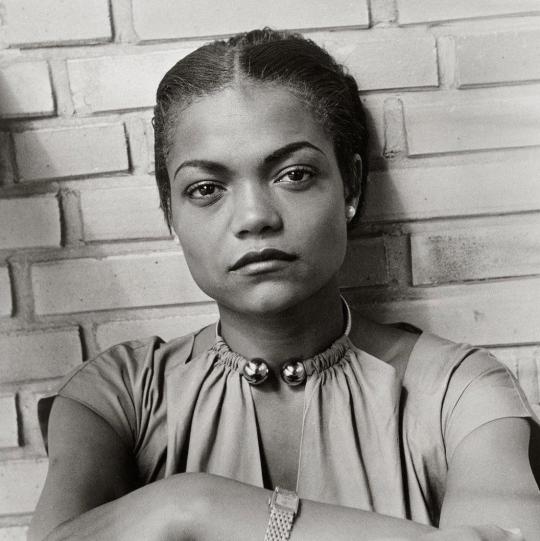
Propaganda
Jane Fonda (Barbarella, Sunday in New York, Barefoot in the Park)—Feminist icon, LGBTQ+ rights activist since the 70s, Civil Rights and Native American rights advocate, environmentalist… she really is THE woman ever
Eartha Kitt (Anna Lucasta, St. Louis Blues)—My friend and I have a saying: NOBODY is Eartha Kitt. A thousand have tried, and they've all come up empty and will continue to do so. Everyone knows her for something: from "Santa Baby" to Yzma in Emperor's New Groove to Catwoman to making Lady Bird Johnson cry for the Vietnam War. She was a master of comedy and sex, an extremely vocal activist, and she aged like fine wine... I honestly don't know what I can say about her that hasn't already been said, so I'll stick to linking all my propaganda. Like what else do you want from me. She was iconic at everything she ever did. Literally name another. How can anyone even think of her and not want to absolutely drown?
This is round 6 of the tournament. All other polls in this bracket can be found here. Please reblog with further support of your beloved hot sexy vintage woman.
[additional propaganda submitted under the cut.]
Jane Fonda:

"I assume she's already been submitted but I gotta make sure. I think there's an element to movies like Barbarella or her segment of Spirit of the Dead of those having been directed by her husband, who famously made movies about her being hot, and the incredible costume design also helped, but good lord. Look at her"

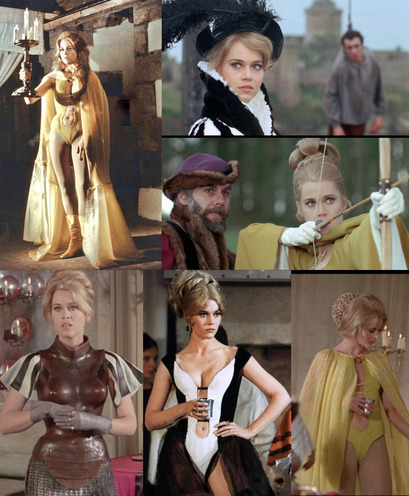
"She was so pretty, dear lord! She was and still us stunning. She’s great at comedy and drama."

"Shes so hot im so gay for me i will let her hit me with hers car"

"Gorgeous and also still getting arrested at climate protests, which is sexy behavior"

"Watching her in Barefoot in the Park seriously made me, a straight woman, question things"

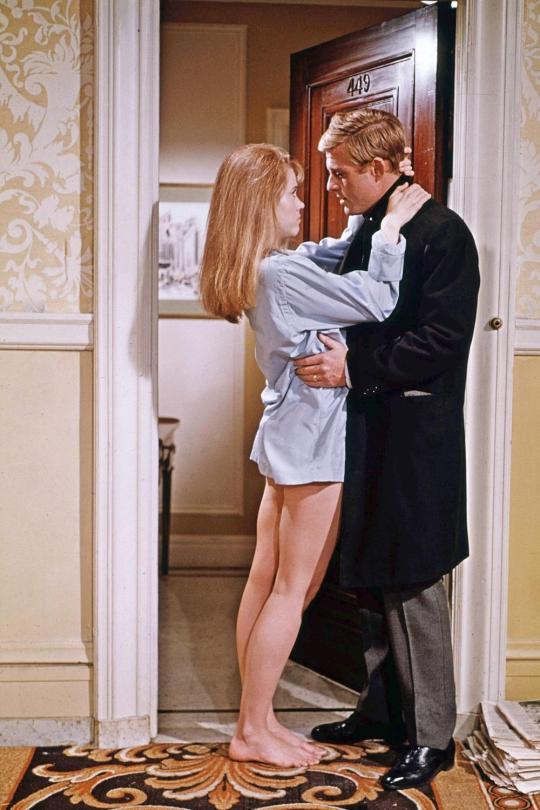
"PLEASE I LOVE HER SO MUCH"
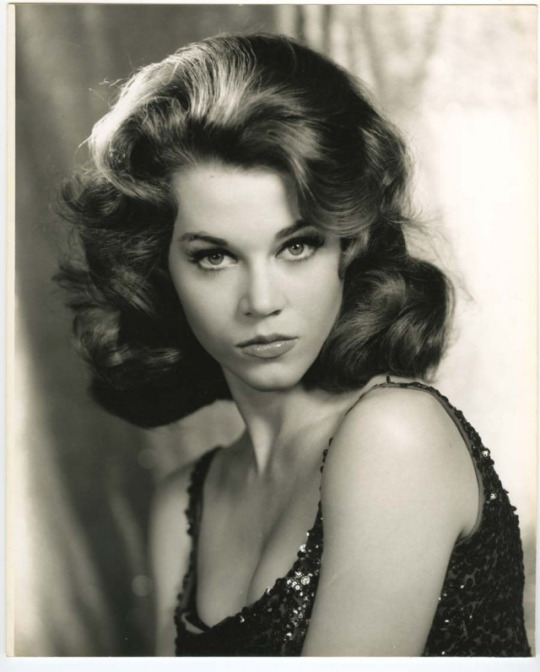
"Her vibes in these movies are so interesting because she, the daughter of an Old Hollywood star, went on to make both poignant dramatic movies and the some of the silliest things you've ever seen but even in the silly space adventures and sexploitations there's always this undeniable gravitas to her. It's like she's able not to take herself very seriously but at the same time never stops having this grace and elegance and makes it all work together. And she's always been very politically active which is also sexy. Her famous mugshot is from 1970 so right at the cutoff mark but come on"

Eartha Kitt:
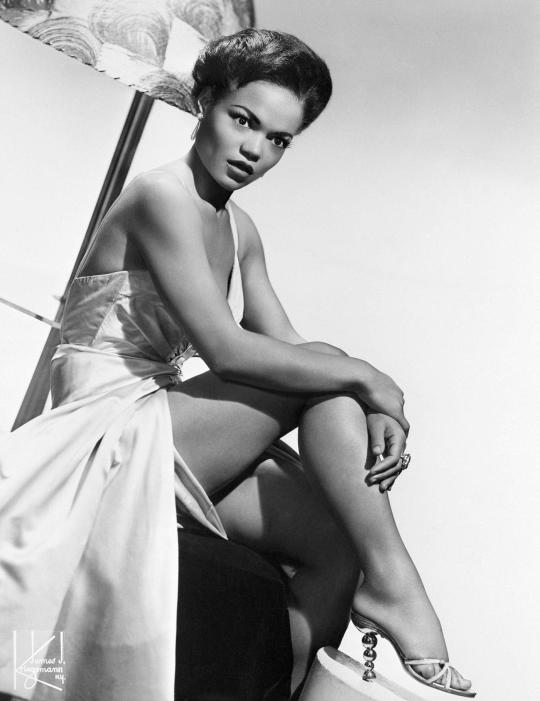
"A hot vintage woman who was not just known for her voice, beauty, poise, and presence, but also her unapologetic ways of speaking about how she was mistreated in the show business as a girl who grew up on cotton fields in South Carolina in the 1930s through the 1940s coming to Broadway first and then Hollywood."

"Have you watched her sing?? Have you seen her face?? Have you heard her talk?? How could you not fall instantly in love. She makes me incoherent with how hot she is."
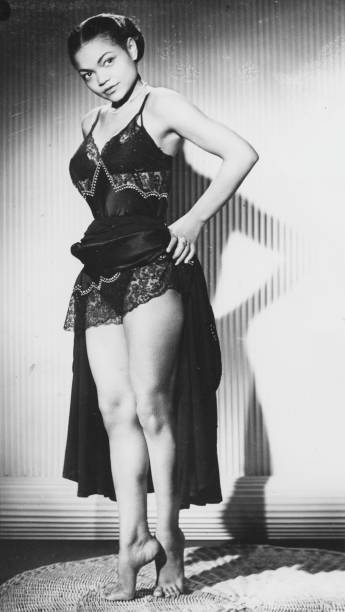
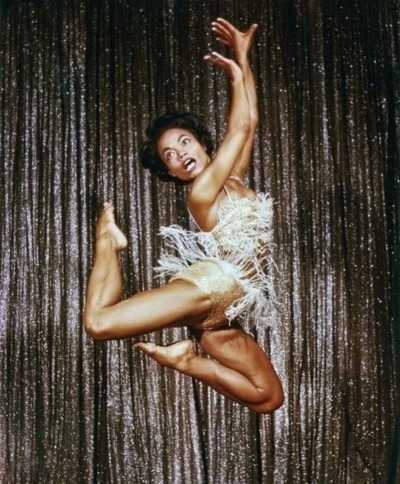
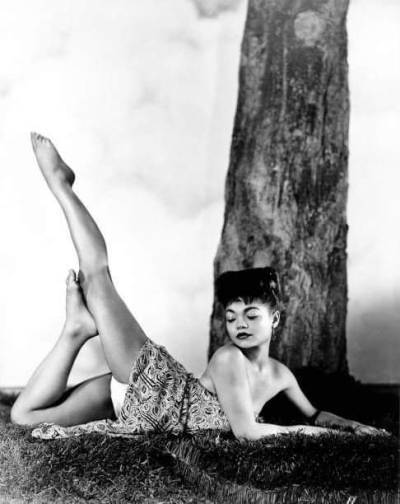
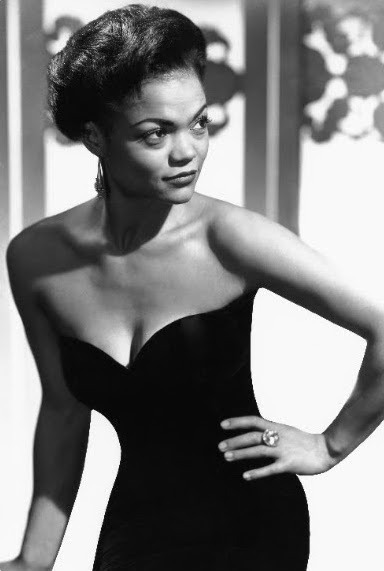
"She can ACT she can SING she can speak FOUR LANGUAGES she is a GODDESS!!! Although she is (rightfully) remembered for her singing, TV appearances (Catwoman my beloved), and later film roles, her early appearances in film are no less impressive or noteworthy!! She’s an amazing actress with so much charisma in every role. She was also blacklisted from Hollywood for 10 years for criticizing the Johnson administration/Vietnam War, so. Iconic. Also Orson Welles apparently called her “the most exciting woman in the world.”
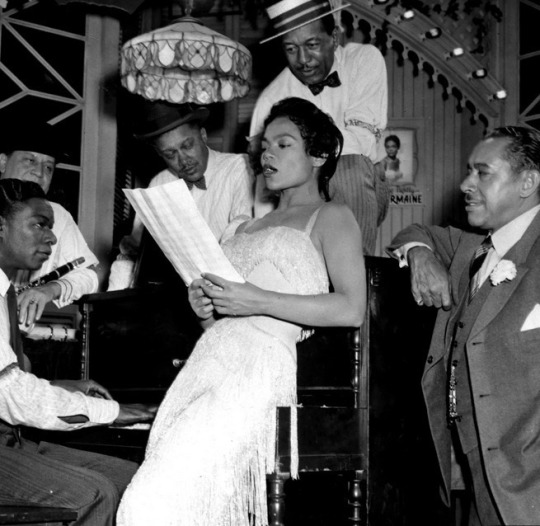
"She had such a stunning, remarkable appearance, like she could tear you to shreds with just a glance- but the most undeniable part of her hotness was her voice, and it makes sense that it's what most people nowadays know her for. Nothing encapsulates the sheer magnetism of her singing better than this clip of her and Nat King Cole in St. Louis Blues, she pops in at 2:49. Also I know it's post-1970 but her song that was cut from Emperor's New Groove is likely to make you feel Feelings."
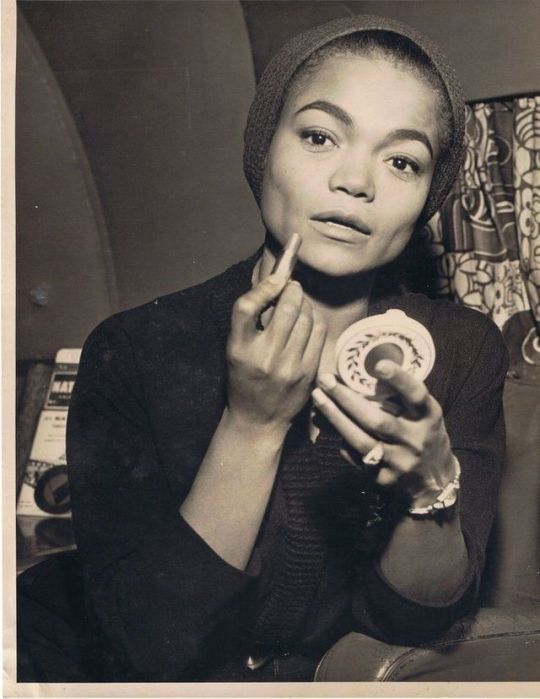
"Even with as racist as Hollywood was in the 1950s and 60s, Eartha Kitt STILL managed to have a thriving career. She also once had a threesome with Paul Newman and James Dean, and called out LBJ over the Vietnam War so hard that it made First Lady Johnson cry. Eartha Kitt was talented, sexy, and a total badass activist."
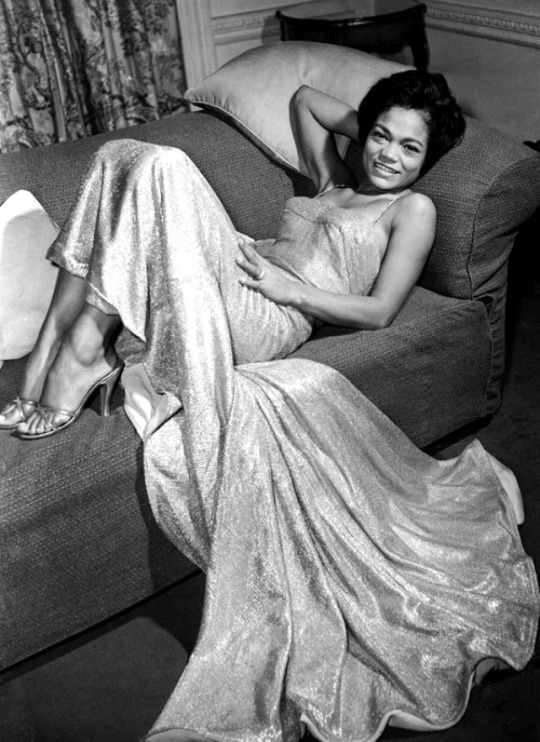
761 notes
·
View notes
Text
to many more | s.r. x liaison!fem reader
“what’s your favorite book?”
spencer looked away from his open files to turn in his chair to see you standing behind him, a couple of manila folders held close to your baby blue long sleeve dress shirt. he had to keep his eyes from dropping lower to get a glance at the curves that hugged to your black pants.
he coughed as he blinked a few times behind his glasses, “uh, well there’s- there’s too many to choose from. if you’re asking about general literature i’d probably say-“
you held a hand out with a shaky smile, “sorry. don’t mean to interrupt. but um, i’m asking if there’s a book or story that’s very meaningful full for you.”
spencer straightened his mouth, feeling it form into that usual line. he let his mind scour for a moment, “uh maybe… alice in wonderland. my mom used to read it as a bed time story from time to time in between narnia and fifteenth century literature. she used to read me valentines poems.”
he saw your brows raise for a moment, “that’s sweet. which did she recite the most?” you readjusted the files.
spencer tapped his fingers over his thighs, “mostly chaucer’s parlement of foules. The poem, which is in the form of a dream vision in rhyme royal stanza, contains one of the earliest references to the idea that St. Valentine's Day is a special day for lovers…” he stopped short when he saw a bored expression draping your face. “sorry, rambling.”
your eyes widen and you took a step closer, “no, no. you’re fine. your voice soothes me, probably looked a bit drowsy.”
spencer scrunched his face, “most people would look tired cause i’m boring them to sleep.” he saw your face fall at his words, he didn’t like the sight.
“well i like hearing your information. i find what you know quite fascinating, like last week you told me that flamingos feathers are actually white or pale gray, but appear pink cause of algae and shrimp. i would’ve never know that.” your smile pushed your cheeks, pupils beaming alight as he felt them ghostly tracing his face.
bashful your eyes directed to your feet, “i enjoyed our date last week.” moving some fingers to run behind your ear, “i’ve always wanted to visit the planetarium, but never found the time.”
spencer smiled fondly, “i’m glad i was able to get you the chance. sometimes they do thirty minute segments on each zodiac sign, it’s when i see a lot of ‘psychics’.”
you chuckled lightly, spencer’s grin widened. “i should take you to one for fun. just to test how real they are.”
he couldn’t help rolling his eyes, “don’t waste your money.” you shrugged simply, “could be a fun third date. she can verify that we’re a match.” giving your upper body a slight twisting at the waist.
before spencer could say anything in reply, you both turned to see hotch calling you from his upper office. “shit, forgot i had to drop these off. i’ll see you later.” and you stepped into his space to lean in an leave a kiss to his forehead. he could feel the residue of your fading gloss. he was happy there wasn’t many people in the bullpen, he didn’t want to deal with morgan’s teasing right now.
the only possible person to have witnessed that display would be hotch. “reid, a word,” his stern voice causing him to flinch in his seat. he quickly made his way up the steps and into the office, closing the door behind him and standing beside you with his hands behind his back. he wasn’t planning to have this conversation a month early.
“is there something you both would like to inform me on?” hotch letting either of you confirm your new relationship instead of assuming.
“uh,” you started to say before spencer interrupted more confidently, “y/n and i are currently seeing each other. it’s only been about two months.” he turned to you, eyes locking and both of you smiled at each other, “but i’d like to believe this will last awhile.”
“well,” hotch cleared his throat, “since you’ve probably read through the handbook spencer, there isn’t anything wrong with fraternization between employees. i would just need both of you to fill out some paperwork.”
you both nodded in agreement. “and please, try not to let this distract you in the field. otherwise you’ll have to be in separate rooms, hotel and assignments.”
“yes sir,” giving a playful salute as he dismissed you both. you decided to pull spencer by his hand in the direction of your, shared office, already knowing jj was busy elsewhere.
“i hope that was-“ you spun into spencer, palms on his cheeks as your lips pressed onto his. he went still for a moment, but you knew he just needed a second to process. his fingers curled along your hips, his warmth seeping through your fabric and onto your skin.
you sighed into his mouth as he worked your lips apart, taking the lead he moved both of you further into the office. your thighs hit the edge, a small gasping allowing for spencer to boldly slip his tongue into your mouth, your heart was pumping in your ears.
if you weren’t in the office you’d let your greedy fingers start to work at unbuttoning his shirt, but instead you were stopped short when someone groaned out, “holy shit!”
spencer was the first to jump away and you saw that penelope and jj were at the threshold with jaws dropped and bugged eyes. “you freaky love birds!” penelope screeched.
“i need to burn this room,” jj groaned as she turned on her heels.
#erin writes spencer#spencer reid#spencer reid x fem!reader#spencer reid fluff#spencer reid imagine#spencer reid fanfiction#spencer reid x reader#spencer reid x liaison!reader#criminal minds x reader#criminal minds imagine
651 notes
·
View notes
Text
youtube
#caribbean#caribbean women#caribbean people#gyal#island life#wine#black#beautiful#dance#carnival#st. lucia#dennery segment#umpa#bap#zafeh moun riddim#on the road#black women#caribbean culture#small island#Youtube#masqueraders#waistline
10 notes
·
View notes
Text
Reader is Allergic to Almond (HC)
Ft. GnMC/Reader, Satan, Mammon, Leviathan, Beelzebub, Bimet, Gamigin
CW: allergy mention (of almond in this hc)

Chocolate and almond together create such a great combination. So a lot of brands mix almond with their chocolates. And chocolate is a major indispensable thing during St. Valentine's Day. However, you are allergic to almond and you think it's best to tell the devils, you don't want them to give you chocolate that you cannot eat.
Satan
Makes sure to never let almond come near you ever again.
Bans almond from the royal palace.
Gets pissed by just the sight of almond now since he cares so much about you and almond could hurt you.
Mammon
Makes sure all Valentine chocolate for you does not contain almond.
Increases subsidiaries for dark chocolate and chocolate mixed with other ingredients that are not almond.
May create a new chocolate brand under your name, it also bears your name. Imagine [MC/YN] Premium Chocolate.
Leviathan
"You weak human, can you not die from just anything."
Cares about you a lot, despite his words.
Orders the chef explicitly and carefully to get rid of any almond they may put into the chocolate that will be given to you. Don't mess up, or else.
Uses this as another reason to spy on you. You're so important that he has to have his eyes on you all the time.
Beelzebub
It's something important related to you, he will remember this.
Sniffs all the chocolate gifted to you in Abyssos to make sure there's no almond. If he discovers any, he will find the owner of that gift and have a serious talk with him.
He can't always be with you so he always tell his nobles to take care of you and to remember what you are allergic of.
Bimet
Thank Mammon he knows this before shoving a gold coin-themed chocolate coin mixed with almond into your mouth.
The news of your allergy will probably make chocolate mixed with almond market segment and almond market experience a downturn. He better withdraw before losing money.
Invests in the new chocolate brand that bears your name. He knows he has to be early to become a large shareholder.
Gamigin
Assures you that he and his brothers will keep you safe.
Goes on to tell his brothers at Paradise Lost in what sounds like a panic tone "Brothers/Hyungs, almond can kill MC."
It only takes Paradise Lost devils a few seconds to realize what Gamigin means by that, though it scares them with the first image they have in mind when they heard Gamigin said that.

Divider by @/sparkbeast20
#what in hell is bad#what in “hell” is bad?#prettybusy what in “hell” is bad?#whb#whb headcanons#whb x reader#whb satan#whb mammon#whb leviathan#whb beelzebub#whb bimet#whb gamigin#WHB_vday_collab
177 notes
·
View notes